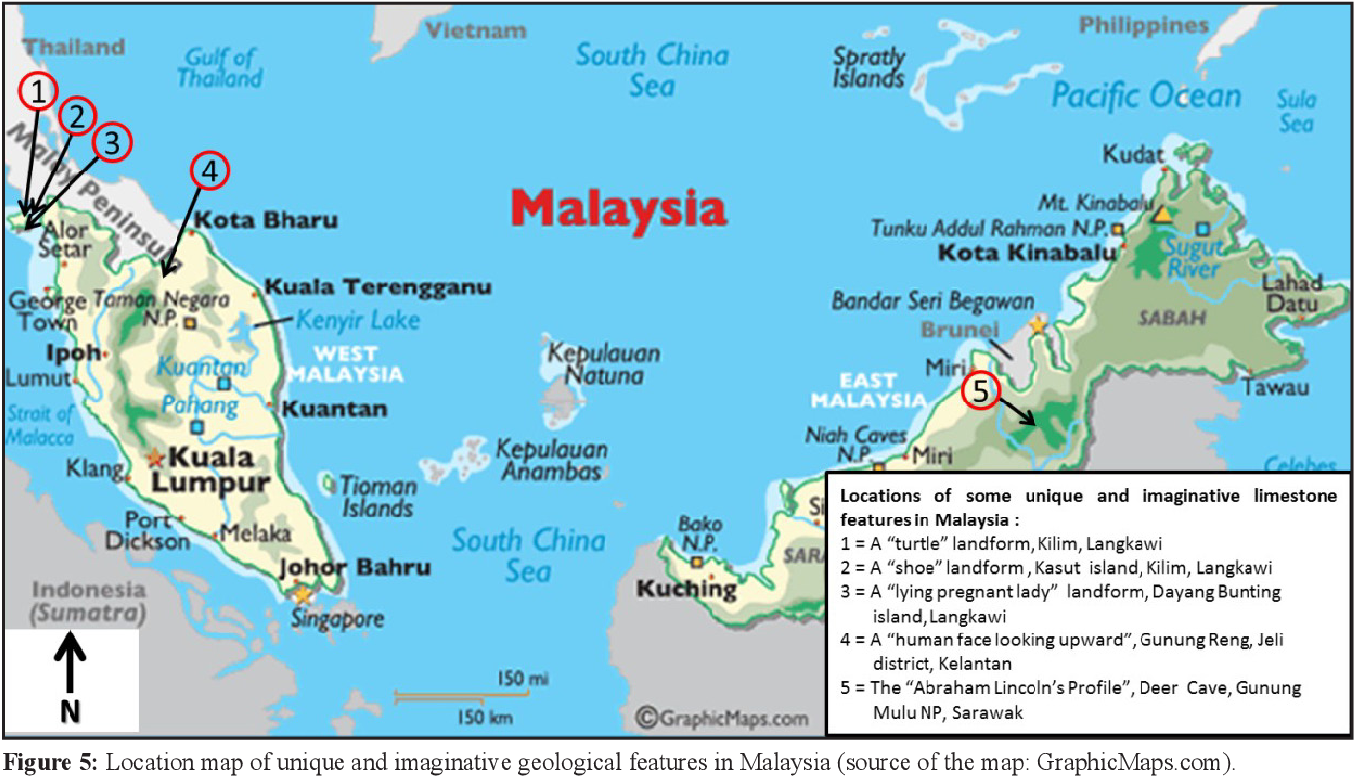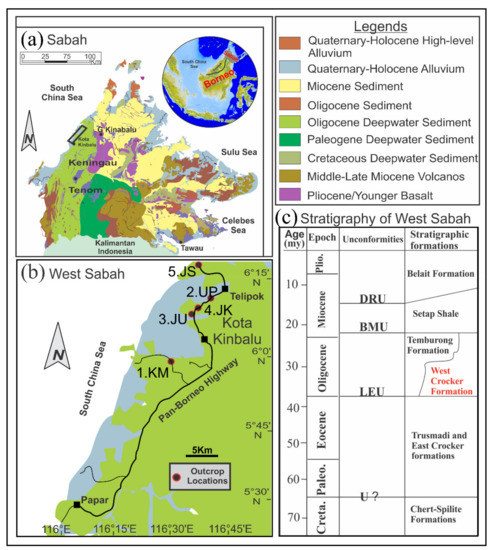Five Member Of Kudat Formation
Twenty-five species of small benthic foraminifera consisting of the agglutinated and hyaline group have identified. A Deep Marine Origin for the Tajau Sandstone Member of the Kudat Formation Kudat Peninsula Sabah.
This sedimentary formation lies on top of ophiolitic basement rock of Cretaceous-Paleocene age.

Five member of kudat formation. The Kudat Formation which is unconformably overlying the Late Eocene Crocker Formation can be divided into two members namely. Small benthic foraminifera have been fully extracted from the mudstone of Kudat Formation Kudat Sabah. Kudat Fault Zone consisting of serpentinite spilite and chert.
All samples are processed according to standard micropaleontological method. The Kudat Formation formed the major rock unit of Kudat Peninsula in the northern tip of Borneo Island is made up of interbedded sandstone and mudstone with fossiliferous limestone lenses. Kudat Formation and Crocker Formation covered almost entirely the North part of Sabah.
The K udat Formation age between Lower to Middle Miocene and It. Kudat Peninsula is underlain mostly by the Kudat. Lithostratigraphically it is divided into Tajau Member and Sikuati Member.
A total of 22 mudstone samples of Kudat Formation in difference localities have been collected for foraminifera analysis. The Tajau Member and the Sikuati Member. Evidence from Facies Analysis and Ichnology.
This website uses cookies to ensure you get the best experience. The Kudat Formation comprise thick-bedded quartzose to feldspathic locally calcareous sandstone an overall abundance of lignitic and carbonaceous layers and the presence of red shales and detrital calcarenites. A total of 22 mudstone samples of Kudat.
A total of 22 mudstone samples of Kudat. Lithostratigraphically it is divided into Tajau Member and Sikuati Member. Tahir and Kong Vui Siong and B.
Almost all mudstone samples of Sikuati Member and. Facies Analysis Sandstone porosity reservoir potential Kudat Neogene Basin The Kudat Formation formed the major rock unit of Kudat Peninsula in the northern tip of Borneo Island is made up of interbedded sandstone and mudstone with fossiliferous limestone lenses. DOAJ is a community-curated online directory that indexes and provides access to high quality open access peer-reviewed journals.
The Kudat Formation into six members in stratigraphically ascending order and from north to south. An exception is the oldest member of the Kudat Formation which is compositionally and texturally immature has a mixed and dissected arc provenance with heavy mineral assemblages dominated by euhedral and subhedral zircons and garnets. Download Full PDF Package.
The Kudat Formation is divided into three major lithological unit a. The Kudat Peninsula is mostly underlain by the Kudat Formation of Early Miocene age that was probably deposited in a shallow to deep water environment Stephens 1956. Posted January 3 2018.
The Tajau Member is well exposed in Tajau the northern part of the area while the Sikuati Member occupying the. The Kudat Formation has initially been subdivided into several members Garau Tajau Sikuati Gomantong Dudar Sirar by Liechti et al. The Kudat Formation age between Lower to Middle Miocene and It has three members.
Smaller benthic foraminifera Analysis of Kudat Formation Kudat Sabah. This has not been followed here due to the confusing nature of the subdivisions. PERMANENT AND NON-PERMANENT MEMBERS The Council is composed of 15 Members.
This formation is underlain by ophiolitic basement rocks of Cretaceous-Paleocene age. China France Russian Federation the United Kingdom and the United States and ten non. The Kudat Formation comprise thick-bedded.
Twenty-five species of small benthic foraminifera consisting of the agglutinated and hyaline group have identified. Smaller benthic foraminifera Analysis of Kudat Formation Kudat Sabah. FACIES AND SANDSTONE CHARACTERISTICS OF THE KUDAT FORMATION SABAH MALAYSIA inproceedingsTahir2017FACIESAS titleFACIES AND SANDSTONE CHARACTERISTICS OF THE KUDAT FORMATION SABAH MALAYSIA authorS.
Tajau Sandstone Sikuati Garau Red Shales Gomantong Sirar. The Kudat Formation formed the major rock unit of Kudat Peninsula in the northern tip of Borneo Island is made up of interbedded sandstone and mudstone with fossiliferous limestone lenses. All samples are processed according to standard micropaleontological method.
Tajau Sikuati and Gomantong 19. A short summary of this paper. Tongkul 2006 informally divides the Kudat Formation into three lithological units.
Munif Koraini 2. The Kudat Formation comprise thick-bedded quartzose to feldspathic locally calcareous sandstone an overall abundance of lignitic and carbonaceous layers and the presence of red shales and detrital calcarenites. 37 Full PDFs related to this paper.
Facies Analysis Sandstone porosity reservoir potential Kudat Neogene Basin The Kudat Formation formed the major rock unit of Kudat Peninsula in the northern tip of Borneo Island is made up of interbedded sandstone and mudstone with fossiliferous limestone lenses. Lithostratigraphically it is divided into Tajau Member and Sikuati Member. 22 mudstone samples of Kudat Formation in difference localities have been collected for foraminifera analysis.
Small benthic foraminifera have been fully extracted from the mudstone of Kudat Formation Kudat Sabah. In Geological Behavior GBR. Formation Stephen 1956 of Early Miocene age Figure 2 that was probably deposited in a shelf-slope environment.
Tectonostratigraphic terranes of Kudat Peninsula Sabah Ahmad Ridhwan Rahim 1 Zainey Konjing 26 Junaidi Asis 3 Nursyazwani Abdul Jalil 2 Abdul Jalil Muhamad 1 Norazhar Ibrahim 1 A.

Applied Sciences Free Full Text Facies Heterogeneity And Lobe Facies Multiscale Analysis Of Deep Marine Sand Shale Complexity In The West Crocker Formation Of Sabah Basin Nw Borneo Html
Komentar
Posting Komentar